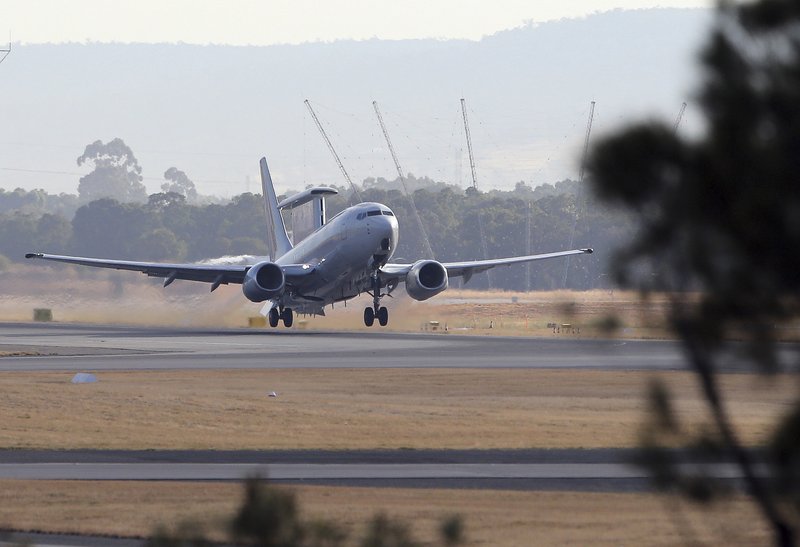PERTH, Australia — A Chinese ship involved in the hunt for the missing Malaysian jetliner reported hearing a "pulse signal" Saturday in Indian Ocean waters with the same frequency emitted by the plane's data recorders, as Malaysia vowed not to give up the search for the jet.
Military and civilian planes, ships with deep-sea searching equipment and a British nuclear submarine scoured a remote patch of the southern Indian Ocean off Australia's west coast, in an increasingly urgent hunt for debris and the "black box" recorders that hold vital information about Malaysia Airlines Flight 370's last hours.
After weeks of fruitless looking, officials face the daunting prospect that sound-emitting beacons in the flight and voice recorders will soon fall silent as their batteries die after sounding electronic "pings" for a month.
A Chinese ship that is part of the search effort detected a "pulse signal" in southern Indian Ocean waters, China's official Xinhua News Agency reported. Xinhua, however, said it had not yet been determined whether the signal was related to the missing plane, citing the China Maritime Search and Rescue Center.
Xinhua said a black box detector deployed by the ship, Haixun 01, picked up a signal at 37.5 kilohertz, the same frequency emitted by flight data recorders.
Malaysia's civil aviation chief, Azharuddin Abdul Rahman, confirmed that the frequency emitted by Flight 370's black boxes were 37.5 kilohertz and said authorities were verifying the report. The Australian government agency coordinating the search would not immediately comment on it.
There are many clicks, buzzes and other sounds in the ocean from animals, but the 37.5 kilohertz pulse was selected for underwater locator beacons on black boxes because there is nothing else in the sea that would naturally make that sound, said William Waldock, an expert on search and rescue who teaches accident investigation at Embry-Riddle Aeronautical University in Prescott, Arizona.
"They picked that (frequency) so there wouldn't be false alarms from other things in the ocean," he said.

